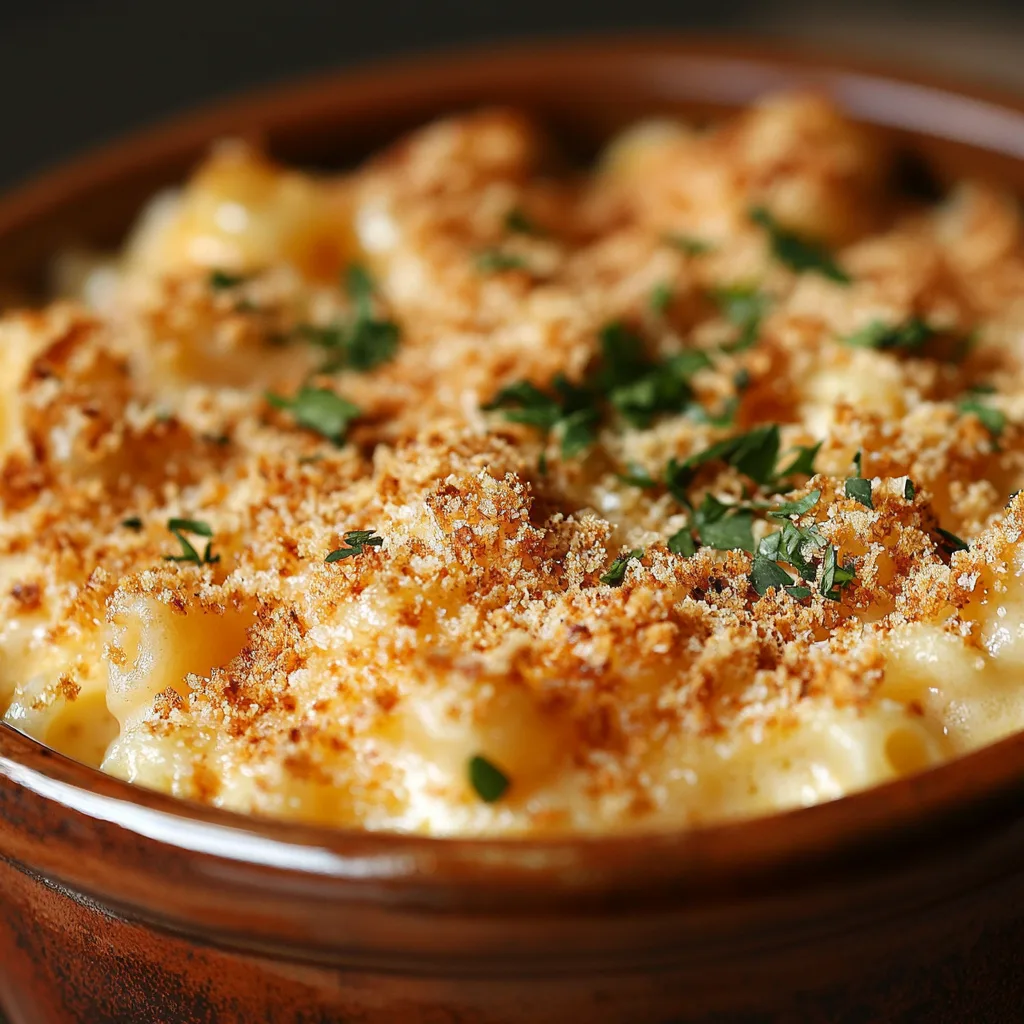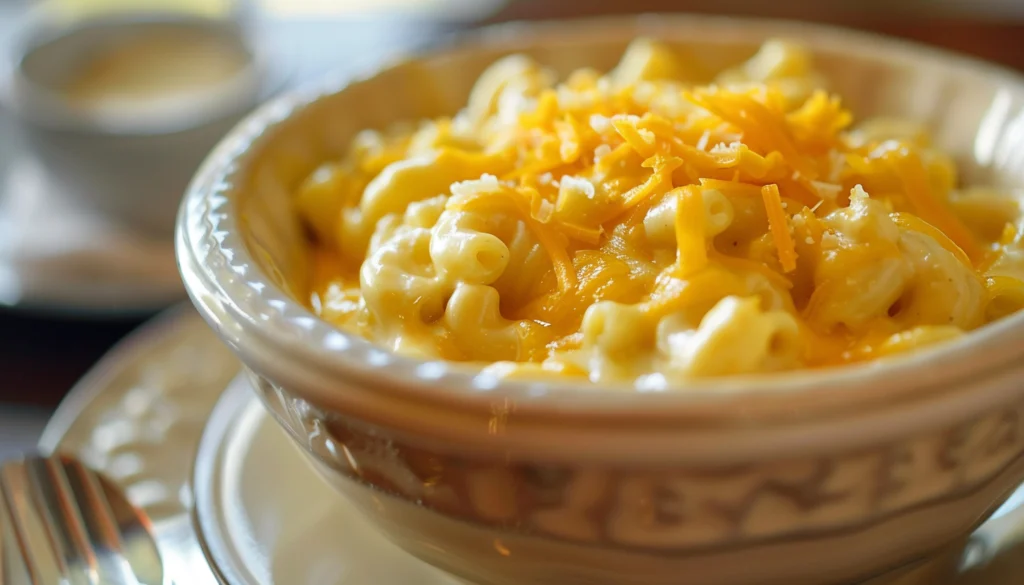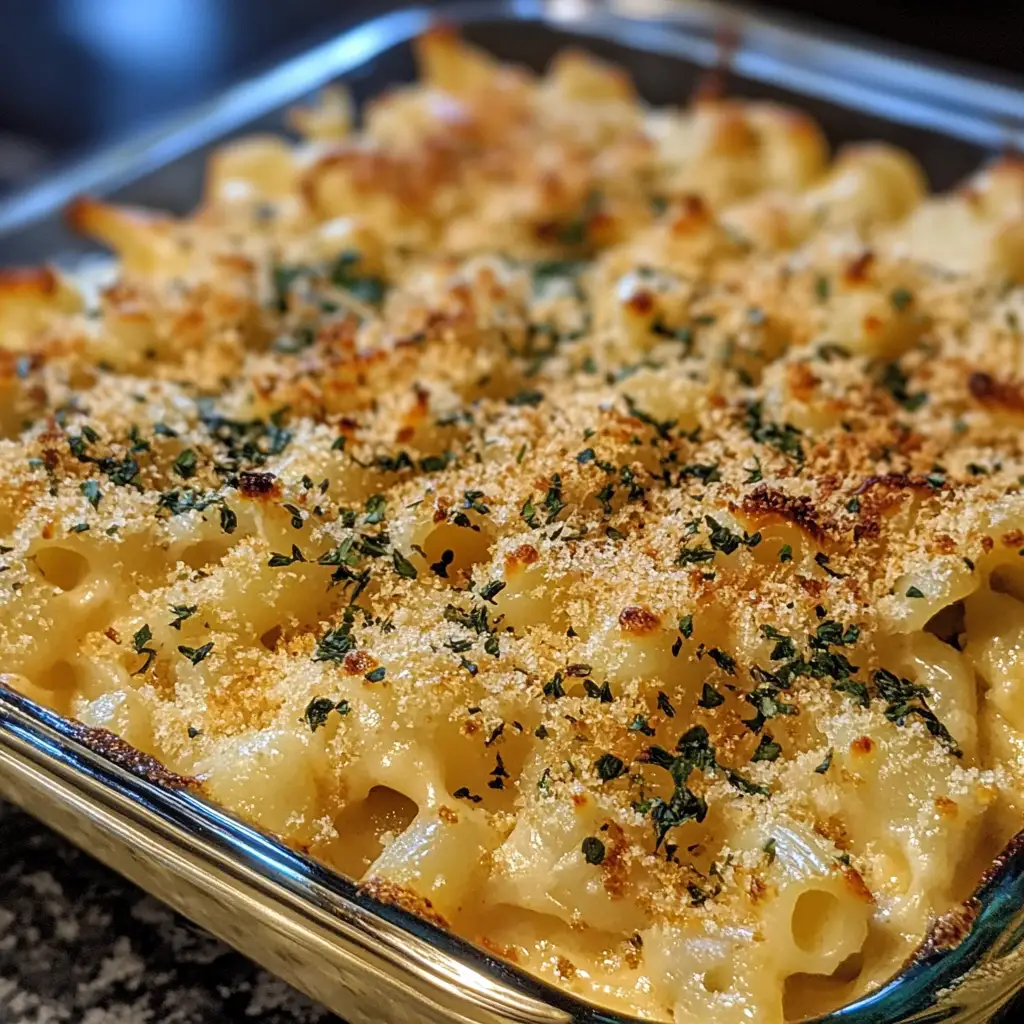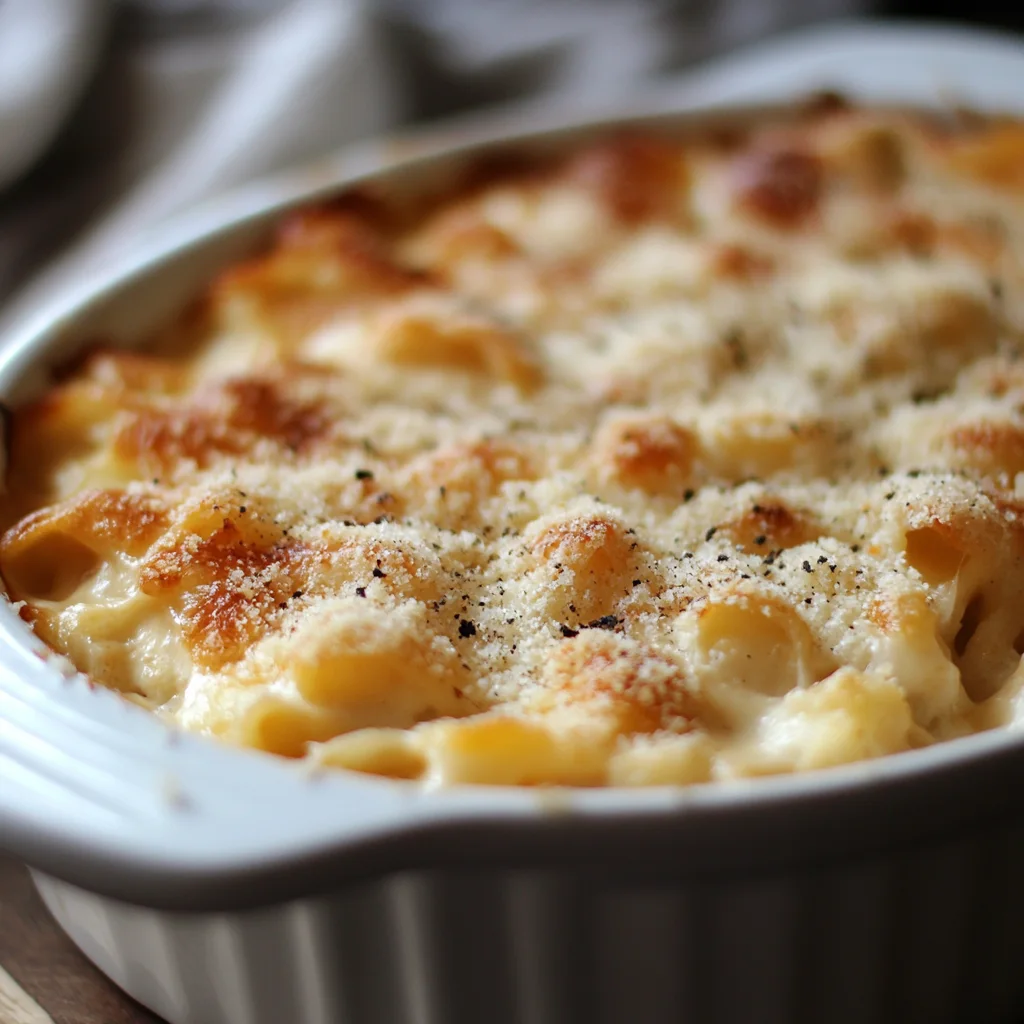In the realm of comfort foods, macaroni and cheese holds a special place in the hearts of many. However, for those following a gluten-free diet, whether due to celiac disease, gluten sensitivity, or personal health choices, finding a version of this beloved dish that’s both safe and satisfying can be a challenge. This article introduces a gluten-free mac and cheese recipe that promises the creamy, cheesy goodness of the traditional dish without the gluten, making it an inclusive option for all to enjoy.
What Is Gluten Free Mac and Cheese?
Swapping traditional wheat-based pasta for alternatives without gluten, this dish ensures safety for individuals with gluten sensitivities. It retains the rich, comforting flavors and creamy texture of the classic, utilizing a blend of cheeses and a roux prepared with gluten-free flour for perfect consistency.
The Benefits of a Gluten-Free Diet
Understanding Gluten-Free Diets
What is Gluten?
Gluten is a protein found in wheat, barley, and rye. It's primarily responsible for the elastic texture of dough, allowing bread to rise during baking. However, for certain individuals, gluten can cause various health issues.
Health Benefits of a Gluten-Free Diet
Improved Digestive Health:
For those with celiac disease or non-celiac gluten sensitivity, removing gluten from their diet can lead to significant improvements in digestive health. Symptoms such as bloating, gas, diarrhea, and constipation may diminish or disappear entirely.
Reduced Chronic Inflammation:
In some individuals, gluten can trigger an autoimmune response, leading to systemic inflammation. A gluten-free diet can help reduce this inflammation, potentially alleviating associated symptoms like joint pain, fatigue, and skin issues.
Enhanced Nutrient Absorption:
Gluten sensitivity can damage the lining of the small intestine, impairing nutrient absorption. A gluten-free diet can help heal the gut, improving the absorption of essential vitamins and minerals.
Additional Benefits for Non-Sensitive Individuals
Weight Management:
Many find that switching to a gluten-free diet helps with weight management. This is often due to a reduction in processed foods and increased intake of fruits, vegetables, and lean proteins that are naturally gluten-free.
Overall Well-Being:
Even for those without gluten sensitivities, a gluten-free diet can contribute to better health. Improved digestive health, reduced inflammation, and better nutrient absorption can lead to enhanced energy levels and overall vitality.

Essential Ingredients for Gluten-Free Mac and Cheese
- Gluten-Free Pasta: Look for high-quality gluten-free pasta that holds its shape well. Rice, corn, and quinoa-based pastas are excellent choices.
- Cheese: A mix of sharp cheddar for depth of flavor and mozzarella for creaminess creates a rich, indulgent sauce.
- Milk & Butter: The base of the cheese sauce, providing richness and smoothness.
- Gluten-Free Flour: Used to thicken the sauce. Options include rice flour, cornstarch, or a gluten-free all-purpose blend.
- Seasonings: Salt, pepper, and a pinch of nutmeg or mustard powder add complexity to the flavor.
Step-by-Step Guide to the Perfect Gluten-Free Mac and Cheese
- Cook the Pasta: Boil the gluten-free pasta in salted water until just al dente. Drain and set aside.
- Make the Roux: Melt butter in a saucepan, stir in gluten-free flour to form a paste, then gradually whisk in milk until smooth.
- Add the Cheese: Remove the saucepan from heat and stir in the grated cheeses until melted and smooth.
- Combine: Mix the cooked pasta with the cheese sauce, ensuring each piece is well-coated.
- Bake (Optional): For a crispy top, transfer to a baking dish, sprinkle with extra cheese or breadcrumbs, and bake until golden.
Tips for the Best Gluten-Free Mac and Cheese
- Pasta Choice: Select a pasta that mimics the texture of traditional wheat pasta to ensure a satisfying bite.
- Cheese Sauce: For a smooth sauce, add cheese to the roux off the heat to prevent separation and graininess.
- Seasoning: Don’t skimp on seasoning; gluten-free dishes can benefit from the added depth of flavor.

Customizing Your Dish
The beauty of mac and cheese lies in its versatility. Consider adding cooked bacon, roasted vegetables, or even lobster for a gourmet twist. For those with additional dietary restrictions, dairy-free cheese and plant-based milk can be substituted to create a vegan version.
Storing and Reheating Tips
Proper storage and reheating methods can make a significant difference in enjoying your gluten-free mac and cheese to its fullest. Here are some detailed tips to ensure your dish remains delicious even after a day or two.
Storing
Storing your homemade gluten-free mac and cheese correctly is crucial for maintaining its taste and texture. Here's how to keep it fresh and delicious:
Cool Before Storing
- Prevent Sogginess: Allow your gluten-free mac and cheese to cool to room temperature before storing. This step is essential to avoid condensation inside the storage container, which can make the pasta become soggy.
Use Airtight Containers
- Maintain Creaminess: Transfer the cooled mac and cheese into airtight containers. Airtight storage helps retain moisture, keeping your pasta creamy and preventing it from drying out.
Refrigeration Guidelines

- Maximize Freshness: Store the airtight container in the refrigerator. Gluten-free mac and cheese can be safely stored for up to 3 days. To enjoy the best flavor and texture, consume it as soon as possible, as the quality diminishes over time.
Reheating
- Oven Method: Preheat your oven to 350°F (175°C). Place the mac and cheese in an oven-safe dish, add a splash of milk (to help rehydrate the sauce), and cover with aluminum foil. Heat for 20-25 minutes, or until it’s heated through. This method helps retain the creamy texture.
- Microwave Method: For a quicker option, the microwave can be used. Transfer a portion to a microwave-safe dish, sprinkle a few drops of water or milk over the top, and cover. Heat on high for 1-2 minutes, stirring halfway through to ensure even warming. Be careful not to overheat, as this can affect the texture.
- Stovetop Method: Add the mac and cheese to a saucepan over low heat. Mix in a little milk to keep the sauce creamy, stirring frequently until it’s evenly heated. This method gives you control over the consistency, allowing you to add more liquid if needed.
Freezing
- Portion and Freeze: If you plan to freeze your gluten-free mac and cheese, portion it into servings before freezing. This makes it easier to thaw exactly what you need without defrosting the entire batch.
- Use Freezer-Safe Containers: Ensure the mac and cheese is in a freezer-safe container or bag. Remove as much air as possible to prevent freezer burn.
- Thawing: Thaw overnight in the refrigerator before reheating. For best results, avoid microwaving straight from the freezer as it can cause uneven heating and texture changes.
Gluten-Free Pasta Choices
Selecting the ideal gluten-free pasta is crucial for creating a perfect mac and cheese that closely mimics the texture and taste of traditional recipes made with wheat pasta. Here’s how to make the best choice:
Types of Gluten-Free Pasta
- Rice Pasta: Rice-based pasta is one of the most popular gluten-free options. It offers a neutral flavor that pairs well with the creamy, cheesy sauce of mac and cheese. Ensure you cook it to just al dente to maintain texture and prevent it from becoming too mushy.
- Corn Pasta: Corn pasta provides a slightly sweet taste and a firm texture that holds up well in mac and cheese. Its golden color also adds a visually appealing aspect to the dish.
Cooking Tips
- Watch the Cooking Time: Gluten-free pasta tends to have a quicker cooking time than traditional pasta. Keep a close eye on it while boiling to ensure it doesn’t overcook.
- Rinse After Cooking: To prevent gluten-free pasta from sticking together and to remove excess starch, rinse it under cold water immediately after cooking.
Complementary Gluten-Free Cooking Guides
For those who are new to gluten-free cooking or looking to expand their gluten-free culinary skills, exploring additional recipes can be very beneficial. For example, our comprehensive guide on Gluten-Free Cupcakes provides valuable tips and insights on selecting suitable gluten-free flours and other ingredients that ensure your baked goods are just as delightful as their gluten-containing counterparts.
Nutritional Considerations

Whole Grain Gluten-Free Pasta:
When preparing gluten-free mac and cheese, choosing whole grain pasta is crucial. Whole grains enhance the fiber content of your dish, promoting better digestion and providing a slower release of energy. High-fiber diets are also linked to numerous health benefits, including improved cholesterol levels and lowered risk of heart disease and type 2 diabetes.
Low-Fat Dairy Options:
Incorporating low-fat dairy products such as skim milk and reduced-fat cheese can significantly decrease the calorie content without sacrificing the creamy texture and rich flavor. Lower fat dairy products contain fewer calories and less saturated fat, helping maintain a balanced diet while still enjoying a comforting meal.
Healthier Gluten-Free Mac and Cheese Tips
Portion Control:
Enjoying gluten-free mac and cheese in moderation is key to maintaining a balanced diet. Serving smaller portions alongside a robust salad or steamed vegetables can provide a more nutritionally balanced meal.
Add Veggies:
Boost the nutritional profile of your gluten-free mac and cheese by adding vegetables like spinach, tomatoes, or broccoli. This not only increases the vitamin, mineral, and fiber content but also makes the dish more colorful and flavorful.
Protein Boost:
For those looking to increase protein intake, consider adding lean protein sources such as grilled chicken or turkey to the mac and cheese. This can make the meal more filling and nutritionally balanced.
A New Take on a Classic Comfort Food
Gluten-free mac and cheese offers a delicious, inclusive option that allows everyone to indulge in the comfort of this classic dish without worry. With the right ingredients and techniques, you can create a gluten-free version that rivals, if not surpasses, the original in both taste and texture. So, whether you’re catering to dietary restrictions or simply looking to try something new, this gluten-free mac and cheese recipe is sure to satisfy.
FAQs
Is Kraft Mac and Cheese gluten-free?
Kraft Mac and Cheese traditionally contains wheat pasta, making it not suitable for those on a gluten-free diet. However, Kraft has introduced a Gluten-Free Mac and Cheese version, which uses brown rice and corn pasta. For more information on Kraft’s gluten-free options, visit Kraft Heinz.
Is Annie’s mac and cheese gluten-free?
Annie’s offers several gluten-free mac and cheese options, utilizing rice pasta to make it suitable for those on a gluten-free diet. They provide a variety of flavors in their gluten-free range, ensuring that individuals with gluten sensitivities can still enjoy their products.
Does gluten-free mac and cheese taste different?
Gluten-free mac and cheese can have a slightly different texture and flavor compared to traditional mac and cheese, primarily due to the type of pasta used. Gluten-free pastas are made from alternative grains such as rice, corn, or quinoa, which can affect the overall taste and texture. However, with the right recipe and high-quality ingredients, gluten-free mac and cheese can be just as delicious and satisfying as its traditional counterpart.
What is gluten-free mac and cheese made of?
Gluten-free mac and cheese is made using gluten-free pasta, which could be made from rice, corn, quinoa, or a blend of gluten-free grains. The sauce typically includes a base of butter and gluten-free flour (such as rice flour or a gluten-free all-purpose blend) for the roux, mixed with milk and a variety of cheeses to achieve the creamy texture and rich flavor characteristic of mac and cheese. Seasonings and additional ingredients, such as mustard powder or nutmeg, may be added to enhance the dish’s flavor.
Can I use any type of gluten-free pasta?
Yes, but some types hold up better than others. Choose pasta made from a blend of gluten-free grains for the best texture.
Is gluten-free mac and cheese healthier?
It can be, especially for those with gluten sensitivities. However, focusing on whole, unprocessed ingredients is key to making it a healthier option.
Can I freeze gluten-free mac and cheese?
Yes, although the texture may change slightly upon reheating. Freeze in an airtight container for up to 3 months.
How can I make my gluten-free mac and cheese more flavorful?
Experiment with different cheeses, add-ins like garlic or onions, and toppings such as herbs or breadcrumbs.
Can I make this recipe dairy-free as well?
Absolutely! Use dairy-free cheese and milk alternatives to create a vegan version.

